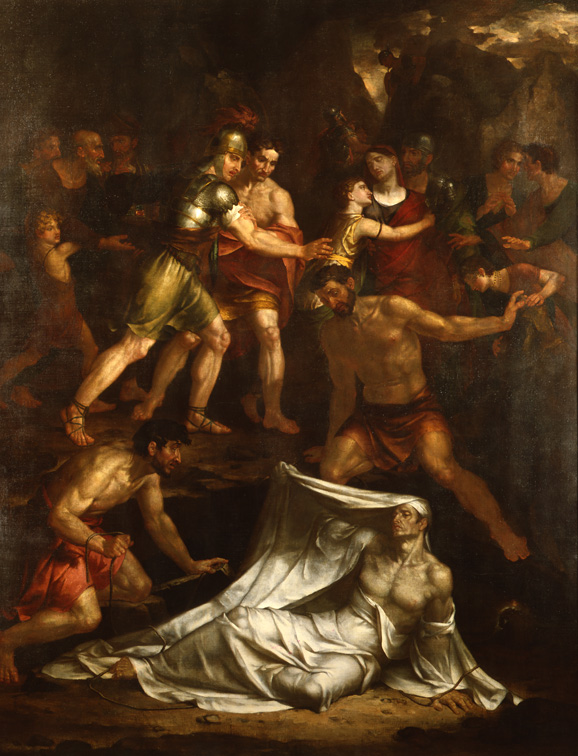The Dead Man Restored to Life by Touching the Bones of the Prophet Elisha by Washington Allston, 2 Kings 13:20-21, Bible.Gallery
Artwork Description

One of the most ambitious works ever undertaken by an early American artist, this monumental painting by Washington Allston depicts a dramatic moment from II Kings 13:21, where a dead Israelite is miraculously brought back to life after accidentally coming into contact with the bones of the prophet Elisha.
A native of South Carolina, Allston was among the most educated and widely traveled American painters of his era. A Harvard graduate, he spent several years in Europe, where he developed close ties with the Romantic poet Samuel Taylor Coleridge and was deeply influenced by British, French, and especially Italian art. His painting reflects a wide range of visual inspirations, drawing compositional elements from Neoclassical tomb sculptures by Louis-François Roubiliac, a High Renaissance altarpiece by Venetian master Sebastiano del Piombo, and even the recently unearthed Parthenon pediment sculptures, which were on public display in London at the time. These references speak to Allston’s expansive artistic vision and deep engagement with European art traditions.
The scene’s theatrical intensity and sophisticated blend of artistic quotations earned the painting a prize from the British Institution in 1814—a gallery that held semiannual exhibitions of contemporary works and Old Masters. When it was later exhibited in Philadelphia, the painting was so well received that the directors of the Academy mortgaged their building in order to acquire it.
Allston’s emotionally charged landscapes and narrative paintings went on to inspire a generation of American artists in the 19th century, cementing his legacy as a pivotal figure in the development of American Romanticism.